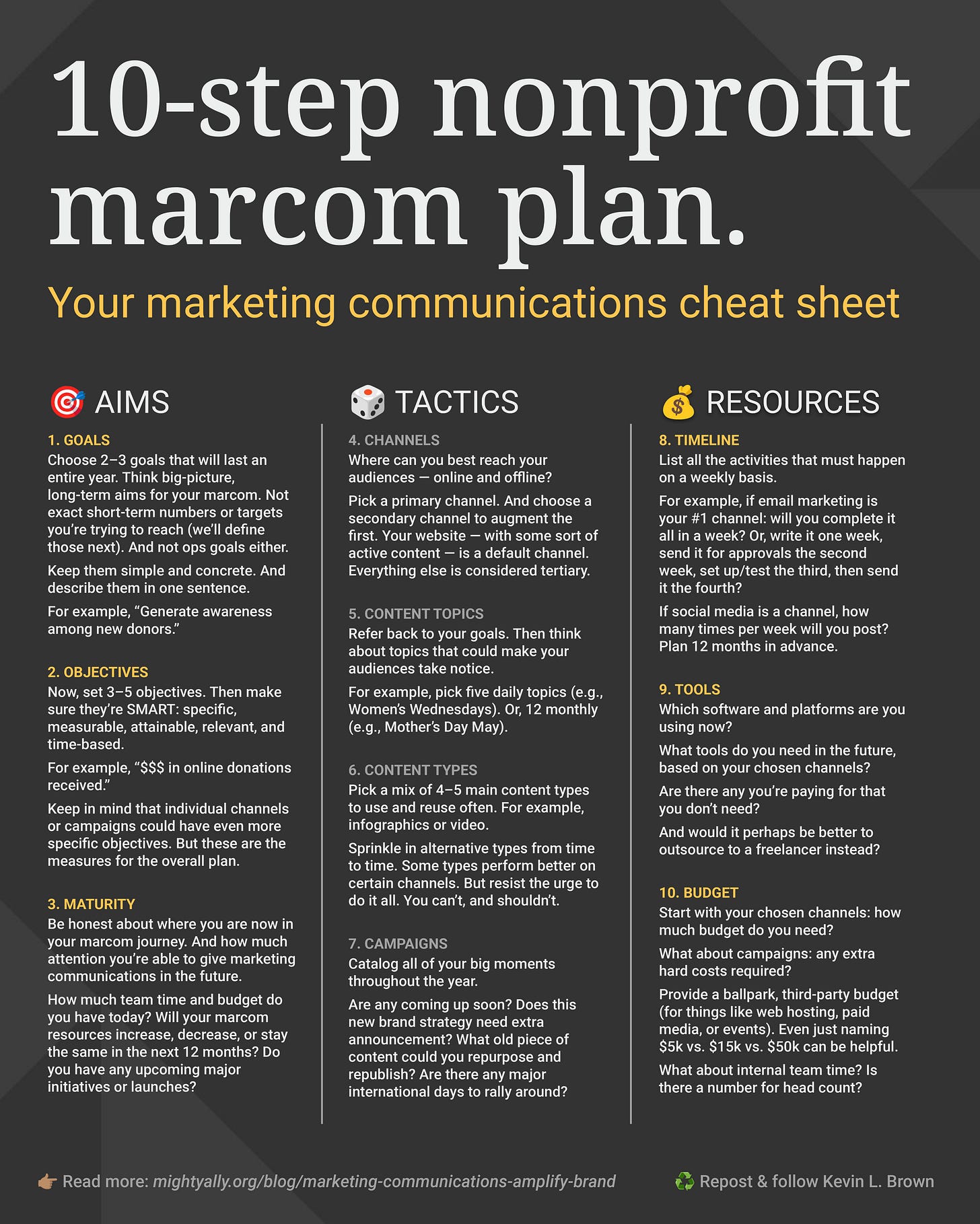10-step nonprofit marcom plan.

📣 Get a nonprofit marcom plan cheat sheet. 📣
And boost your marketing communications using the 10 steps in this infographic.
Because it should be obvious:
Amplifying your brand impacts the bottom line. From increased fundraising to impact investment to driving more sales.
Although marcom isn’t just about funding. ⤵
Good communications can generate impact too. Like reaching participants, influencing government partners, or recruiting talented staff.
“At their core, foundations and nonprofits are in the business of developing and advancing big, bold ideas,” says Sean Gibbons. “If you want your ideas to take hold and win, you need to communicate and communicate well. It’s not an option anymore — it’s a necessity.”
There’s no standard way to make a marketing plan.
But if you’ve already completed your theory of change and positioning strategy, you should have:
✔️ Vision
✔️ Mission
✔️ Uniques
✔️ Audiences
✔️ Messaging
And the marcom plan stems from there.
So it’s time for you to grab the megaphone.
Because your bold cause deserves bold comms.
💪🏽💛
P.S. — Need help?
In our Mighty Ally online course, Brand Bootcamp, you get 18 (!) total lessons in the marketing communications module. Including the marcom plan, messaging, visual identity, website strategy, pitch deck, and CSR partnerships. Plus client examples and an editable Google Slides blueprint.
The Daily Bonus
As you work on your marcom plan using the cheat sheet above, here’s another helpful resource for your digital content:
The Length & Character Count for Everything on the Internet from HubSpot
Because “it's not always about the limits set by different platforms but rather the optimal number of characters for user engagement.”
“For example, you probably know the character limit for a post on X is 280, but did you know using less is actually more effective?”
For blog posts, on average, the top 10 results for most Google searches are between 2,000 and 2,500 words.



